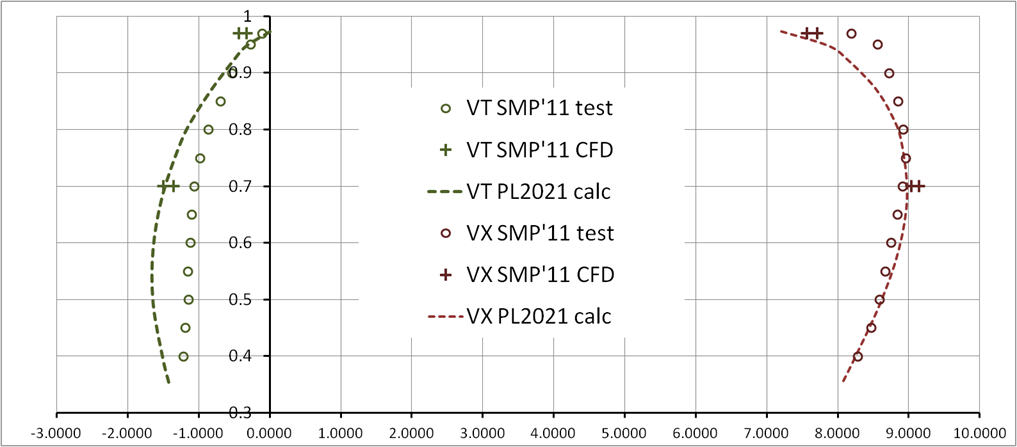New features for improved wake-adapted propeller design and analysis
Development in 2021 for HydroComp PropElements offers new features across the range of applications.
PropElements + FINE/Marine coupling
User testing is underway for the new coupling of HydroComp PropElements with NUMECA’s FINE/Marine CFD software. One of the challenges of full self-propulsion analysis with CFD is the computational load required to model the propeller within the 3D space. When coupled with FINE/Marine as a higher-order actuator disk replacement, PropElements calculates velocity fields and propeller body forces for the wake field, offering a significantly improved model of propeller performance for self-propulsion simulation at a fraction of the computational cost of full “sliding grid” 3D analysis.
Updates to the prediction of nozzle contribution
A number of updates have been added to the modeling of nozzle contribution for the design and analysis of ducted propellers in PropElements. New for 2021 include:
- Updated model for 19A and High Efficiency nozzles.
- New scale correction for nozzles to better predict large nozzle.
- Addition of nozzle style 30 as a minimum-drag non-contributing nozzle, and style 38 for symmetric fore-aft performance.
- Indicator for the potential inception of critical nozzle cavitation.
Prediction of streamline parameters
A new script-based module has been developed for the prediction of streamline axial and tangential velocities at positions some axial distance from the propeller’s design reference origin (both upstream and downstream), as well as corresponding jet compression (contraction) and twist angle.
Results of total axial and tangential velocities for the PPTC benchmark from SMP’11 are shown below. (This is for a reference plane 20% diameter aft of the propeller plane.) Markers are for test data with dashed lines the PropElements prediction. The report also included CFD predictions from multiple participants for the 0.70 and 0.97 radii, with results (for the mean 90%) shown by the error band markers in the plot. You can note that PropElements very closely matched the CFD predictions.
(This is a foundational piece of the upcoming contra-rotating propeller analysis module under development for 2022.)

Preliminary prediction of properties for noise and vibration assessment
New for 2021 are prediction of various properties for follow-on noise and vibration analysis. These properties are included in the Performance and Strength calculations, and can be generated for output using simple scripts. Parameters that are calculated include:
- Key frequencies, including shaft and blade pass.
- Entrained water properties, including wetted added mass and moment of inertia.
- Tip vortex parameters, including inception cavitation number, resonance frequency, and core diameter.
- Singing parameters, including estimation of the blade natural frequency and the radial exciting “vortex street” frequencies.
Miscellaneous updates and enhancements
Of course, we also found opportunity for a number of miscellaneous enhancements, including:
- Automatic estimation of ideal angle for imported geometric data
- Improved influence of the hub’s effect on induced velocities
About HydroComp PropElements
For additional information, click to: www.hydrocompinc.com/solutions/propelements
About HydroComp
Since 1984, HydroComp has been a leader in providing hydrodynamic software and services for resistance and propulsion prediction, propeller sizing and design, and forensic performance analysis. Through its unique array of software packages and services, HydroComp now serves over 1200 naval architectural design firms, shipyards, yacht owners, ship operators, propeller designers, universities and militaries around the globe.
Download the full press release here.
For more information, please contact:
Danielle Doonan, Marketing Coordinator
danielle.doonan@hydrocompinc.com
HydroComp, Inc.
15 Newmarket Road, Suite 2
Durham, NH 03824 USA
+1 603-868-3344
www.hydrocompinc.com

